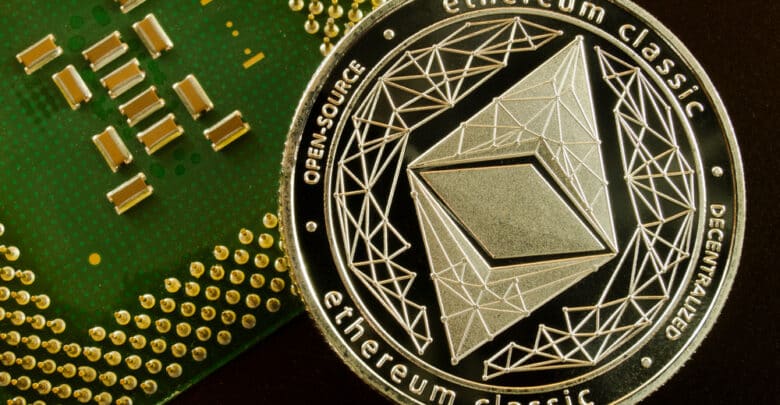A Complete Beginner’s Guide to Ethereum Classic

Introduction
However, many people do not know that Ethereum has been split into two different blockchains. The first blockchain that was the real Ethereum network is known as Ethereum Classic today. The second Ethereum blockchain, which is also the second largest blockchain project in the world by market cap, is known as Ethereum 2.0.
Creation of Ethereum Classic
Ethereum blockchain was introduced by a team of developers such as Vitalik Buterin, Charles Hoskinson, Joeseph Lubin, Gavin Wood, and Anthony Di Lorio. The blockchain first made its debut as an alternative to the Bitcoin network. Ethereum network introduced some major changes in the utility of the blockchain network, and it allowed new cryptocurrency projects and smart contracts to use Ethereum as an ecosystem. However, in 2016 the Ethereum blockchain was divided into two by a Canadian programmer named Vitalik Buterin to recover the stolen funds on the network by hackers.
A Hard Fork for a blockchain signifies major changes in the programming that can result in completely transforming or partially upgrading the network in terms of performance and functionalities. Ethereum network made its public debut in 2015 during an event called the Frontier. During the event, Ethereum mined its first block, which contained around 8,892 cryptocurrency transactions. The event also saw some of the major financial companies funding the Ethereum blockchain project.
Following the successful launch of the Ethereum blockchain, many developers from around the world started to use the network for creating new cryptocurrency and DeFi applications. In 2016, one group of developers created a DAO or Decentralized Autonomous Organization on the Ethereum blockchain that was used for setting up a new Venture Capital Fund. However, the DAO contained some technical backlogs and made way for a vulnerability.
It was not long before; some hackers detected the technical blind spot and launched an exploit attack on the Ethereum blockchain. As a result of the hack attack, the investors ended up losing around $60 million worth of Ethereum coins. It is worth noting that the Ethereum blockchain allowed the community members to make collective decisions for the allocation of assets in the ecosystem. The infamous DAO Hack of Ethereum enforced the Ethereum developers to come up with a solution.
While the Ethereum investors were panicking, the Ethereum developers had only 28 days to resolve the matter. Under these circumstances, the proposal for an Ethereum hard fork to recover the funds gained the most popularity. However, the Ethereum community was divided on the matter. As a result, the proponents of the original Ethereum blockchain remained on Ethereum Classic, while the users who switched to the Ethereum network after the hard fork implementation became Ethereum 2.0 investors.
How does Ethereum Classic Work?
Just like the flagship Ethereum network, the Ethereum Classic blockchain also uses PoW or Proof-of-Work consensus model. It means that investors, miners, and node validators from any part of the world who have suitable hardware and software can validate the transactions on the Ethereum network using computers and earn ETC rewards. It is important to note that coins native to Ethereum Classic are known as ETC.
On the other hand, the coins native to Ethereum 2.0 blockchain are called ETH. The investors can send ETC to each other using the same Peer-to-Peer model such as Bitcoin. In addition, the programmers can also use the Ethereum Classic Blockchain to interact with different types of DeFi applications on the network. On account of its security-related issues, the ETC blockchain is not popular or active as the ETH network.
DeFi Llama reported in 2022 that the Ethereum Classic ecosystem showed little to non-existent activity. On account of its considerably lower usage, the price of ETC is many times smaller than ETH. It is worth noting that when a blockchain is not active enough, it is once again exposed to big security risks. Between 2019 and 2020, the Ethereum Classic network suffered from various 51% attacks. A 51% attack is a scenario where the miners can change the blockchain transactions.
It is made possible by gaining control over more than 51% hashrate of a blockchain. The consequence of a 51% attack is that the rouge hackers can use the coins twice for making faux transactions. Regardless of the challenges, Ethereum Classic developers have been working on adding new upgrades on its mainnet to remove the threat of further attacks. The most recent update on Ethereum Classic is called Mystique Hard Fork, which was added in 2022.
Historical Facts about Ethereum Blockchain
- The genesis Ethereum block was mined in July 2015, at the same time when its mainnet went live.
- The DAO Ethereum attack was discovered in March 2016. That was planning to create a new venture capital fund.
- One month after the detection of the Ethereum DAO hack, around $60 million were stolen from the network.
- Before the beginning of July 2016, Ethereum developers were pressed to come up with a solution that could recover their stolen funds.
- Ethereum co-founder added the hard fork on the Ethereum network shortly afterward despite the disagreement within the community that resulted in Ethereum Classic and Ethereum 2.0.
- In March 2017, Ethereum Classic validators voted for approval of a new proposal that capped the total supply of ETC tokens at 210 million. However, the ETH supply remains infinite to date.
- Between 2019 and 2020, the Ethereum Classic blockchain suffered from multiple 51% attacks on account of its diminishing trading volume.
- In 2020, ETC developers added a major upgrade called MESS to make the blockchain more secure against hack attacks.
- In 2022, ETC Cooperative reported the addition of another security upgrade on Ethereum Classic known as Mystique Hard Fork.
- Ethereum Classic Blockchain has completed experiments with building side-chain projects successfully while the developers of Ethereum 2.0 are still working on it.
How to Purchase Ethereum Classic (ETC)?
Ethereum Classic is listed on cryptocurrency exchanges like Poloniex and Bittrex. The investors who wish to hold Ethereum Classic in their cryptocurrency portfolio can make the exchange using Bitcoins or ETH. There is another option of purchasing ETC using fiat currencies such as USD. Some of the major cryptocurrency exchanges like Binance, Huobi Global, and OKEx have also listed Ethereum Classic on their platforms. Investors can also learn about the latest price projections of Ethereum Classic using the cryptocurrency aggregator called CoinMarketCap.
How to Store Ethereum Classic (ETC)?
The first and ideal place for storing ETCs is using the built-in ETC wallet. The digital currency wallet is suitable for making all types of ETC swaps and also allows the investors to perform various transactions using the Ethereum Classic blockchain. One great advantage of using an ETC wallet is that it has a simple user interface and does not require extensive programming knowledge to operate.
On the other hand, there are several other digital currency wallets, such as Exodus and Jaxx, that can be used for storing ETC. The ETC coin holders can ask for the listed support on any multi-token supporting wallet and use it accordingly. Many investors prefer to keep their ETC reserves on a hardware wallet such as Ledger Nano S to prevent any hack attack.
What are Smart Contracts?
While blockchain technology is as new as the 21st century, surprisingly, Smart Contracts date back to the 20th century. In 1994, a computer scientist named Nicholas Szabo invented Smart Contracts. At the time of his invention, there were no blockchains or decentralized applications. However, after the introduction of the first blockchain project called Bitcoin by Satoshi Nakamoto, smart contracts became a widely used and integrated technology.
The Ethereum blockchain was built using smart contracts as its core technology. A Smart Contract is an automatic program that keeps running under predefined conditions without the intervention of an active supervisor. The addition of smart contracts in blockchain can lead to the discarding of all the intermediaries in the traditional financial network, such as banks, tellers, file storage, insurance, credit score recording, and centralized identification.
Ethereum Classic Blockchain used smart contracts to achieve the Turing Virtual Machine Sputnik. Alan Turing was a mathematician who created Turing Machine to decode secret messages during the Second World War. The Turing Machine is capable of processing any information based on strings of data made up of a combination of zeros and ones. Turing Machine laid the foundation for programming-based computers, and his SputnikVM can run any computer program that has been encoded in it.
Likewise, the Ethereum Classic network aims to become a decentralized network that can run and host any DeFi application that has been encoded into the ecosystem. In this manner, Ethereum Classic cannot only generate a decentralized digital currency but also operate as a global decentralized network. The EVM or Ethereum Virtual Machine model uses smart contracts for the generation of rewards in the form of ETC that is granted to stakeholders for conducting transactions.
Emerald Tools for Developers on Ethereum Classic Blockchain
The main idea behind Ethereum network creation was to enhance the Bitcoin blockchain in such a manner that it can support and host DeFi applications. Therefore, it was also crucial for the Ethereum Classic developers to add a detailed library of developer tools to the network. The same development tools on the Ethereum Classic blockchain are known as Emerald Tools. These tools are useful for programmers who wish to create a new decentralized application on the ecosystem.
Anyone who has read programming can understand that it needs to have a database and an Integrated Development Environment (IDE) that allows the developers to write new applications. Emerald tools offer user interfaces, assembly tools, and directories for the developers on ETC. The main purpose of Emerald Tools is to allow more developers to use the ETC platform for creating decentralized applications.
Developers on ETC can also work on IoT (Internet of Things) programming. IoT is a technology that allows programmers to create applications that can run in tandem with the internet connection or cloud-based services. The developers can also deploy basic smart contracts on their dApps to enable digital currency transactions that work on a federated computer network and works as a digital ledger.
Coin Supply and Network Integrity
The method of mining and Coin issuance on the Ethereum Classic network is widely different from Ethereum 2.0 blockchain. Ethereum genesis blockchain was created with an encryption protocol called the Complexity Bomb. The main purpose of adding complexity bomb protocol was to make mining or decryption of Ethereum block more difficult than the last one. As a result, the network has to be upgraded to the PoS or Proof-of-Stake mining option.
While the ETH developers are planning to switch to PoS to deal with the Complexity Bomb, the node validators on ETC have suspended the complexity bomb protocol through voting. The average processing time of a single blockchain unit is around 10-14 seconds. In the same manner, miners can earn 5 ETC as a reward for verification. Ethereum Classic blockchain offers a higher transaction speed therefore, the transaction fees and mining rewards on the network remain smaller than ETH.
While transaction gas can rise as high as $40 for a single transaction, ETC gas fees remain as low as 1 cent per transaction. Furthermore, Ethereum Classic can remain an inflationary blockchain network till 2025. An inflationary asset is a type of investment that keeps increasing in price on account of various economic factors. By 2025 all the ETC tokens will be mined. However, there is no limit on the issuance of new tokens on ETC. Therefore, the ETC model believes that ETC coins will remain valuable in the long run due to continuous price inflation and active utility.
Ethereum Classic’s Rival Blockchains
The blockchain sector has become a highly competitive space during the last 12 years. According to Earthweb.com, there will be more than 1000 blockchains in the world in 2022. Getting a ranking in the top 10 cryptocurrencies in the world is not a small feat. In the same manner, Ethereum Classic is also facing fierce competition from several rival blockchain projects. Among all the Ethereum Classic competitors, Ethereum 2.0 is listed as the top contender.
Many developers and investors are using Ethereum Classic because they are waiting for the remerging event with Ethereum 2.0 network. On the other hand, the number of blockchains that are using smart contracts more innovatively and productively is also increasing consistently, like Cardano, Binance Smart Chain, and Solana, among others. However, ETC stakeholders claim that they are more focused on improving protocols and upgrades on the Ethereum Classic network rather than its competitors.
Future of Ethereum Classic
Ethereum Classic network has indeed suffered from several hack attacks over the years. The DAO Ethereum attack even gave birth to the Ethereum Classic blockchain. However, despite its technical limitations, Ethereum Classic has retained a considerable portion of investment interest and market goodwill. The ETC developers have added several major upgrades on the mainnet over the years to improve its security-related issues.
On the other hand, big players have mostly migrated from the Ethereum Classic blockchain for the time being. At the same time, many professional investors have retained a considerable portion of ETC coins and tokens in the hopes that they can regain massive value in the future. Blockchain community members are looking forward to seeing what types of innovations are added to the network in terms of Smart Contracts improvement. Furthermore, there is also a faint chance of reintegration of Ethereum Classic and Ethereum 2.0 next year.
Key Differences Between Ethereum Classic and Ethereum 2.0
It is easy to confuse ETC with ETH despite the major differences between the two blockchains. However, some of the most distinct differences between ETC and ETH are listed below for the benefit of the reader:
- Ethereum Classic and Ethereum 2.0 are the two daughter blockchains of the beacon Ethereum network.
- Ethereum Classic has a limited coin supply of 210 million ETCs, while Ethereum 2.0 offers an infinite supply of ETH coins.
- Ethereum Classic has a lower gas fee on account of the lower trading volume. On the other hand, Ethereum 2.0 suffers from massive gas fee inflation on account of the increasing trading volume.
- Ethereum Classic has been around for as long as 2013. However, Ethereum 2.0 was created in 2015 as a result of the DAO exploit.
- The Blockchain technology of Ethereum Classic is less developed and advanced in comparison to Ethereum 2.0.
- Ethereum Classic coin ETC has a lower price appreciation in comparison to Ethereum 2.0 coin i.e. ETH.
- Ethereum Classic does not limit its mining rewards. However, Ethereum Classic has decreased its mining rewards by 20% after every five millionth block.
- Ethereum Classic has suffered from more hack attacks in comparison to Ethereum 2.0.
- Ethereum Classic developers have successfully deployed side-chains while Ethereum 2.0 developers are still working on them.
- Ethereum Classic is more decentralized in comparison to Ethereum 2.0.
Conclusion
Just like Bitcoin, the Ethereum Classic blockchain is also immutable. Many cryptocurrency investors believe that ETC can gain massive traction in the future. On the other hand, many investors have lost their interest in ETC and moved on to ETH blockchain. Among major Ether stakeholders, Enterprise Ethereum Alliance has also switched to ETH. Meanwhile, noteworthy names such as Barry Silbert from Digital Currency Group have retained their interest in ETC. Cryptocurrency investors should stay updated on the ETH, ETC related forks and make their investment decisions based on technical and logical factors.
Tokenhell produces content exposure for over 5,000 crypto companies and you can be one of them too! Contact at info@tokenhell.com if you have any questions. Cryptocurrencies are highly volatile, conduct your own research before making any investment decisions. Some of the posts on this website are guest posts or paid posts that are not written by Tokenhell authors (namely Crypto Cable , Sponsored Articles and Press Release content) and the views expressed in these types of posts do not reflect the views of this website. Tokenhell is not responsible for the content, accuracy, quality, advertising, products or any other content or banners (ad space) posted on the site. Read full terms and conditions / disclaimer.







